Abortion
This is part five of a series that examines President John Kennedy’s liberal beliefs and breaks down the misrepresentations of JFK by Larry Elder. Elder presented a very distorted version of JFK in a 2017 online piece, “John F. Kennedy: What Would He Think of His Party?” that both reflects and informs the opinions of many people on the political right who wish to pretend that Kennedy would be a Republican or a conservative, if he were alive today. If you have not read Part 1 of this series, I advise you begin there.
In Part 4, I discussed Elder’s misrepresentation of Guns, the Second Amendment, and the NRA. In this, the final part in the series, we examine Elder’s closing argument, abortion.
Like all of Elder’s claims, his misdirection on abortion is easily exposed when you make an effort to look at the facts. The much harder part is getting people to look. Here is how Elder begins his abortion argument:
Abortion was not an issue during the 1960 presidential campaign. Nor was it an issue during his presidency. Kennedy did say this: “Now, on the question of limiting population: As you know, the Japanese have been doing it very vigorously, through abortion, which I think would be repugnant to all Americans.”
It is a common problem in the Pro-Life crowd, to confuse any criticism of abortion with opposition to all abortions, or to think the “Pro-Choice” means “pro-abortion.” The question Kennedy was answering in the above quote, was posed by John Fischer of Harper’s: “Do you see any hope at all of slowing up the rate of population increase?” It’s true, abortion was not a major national issue at the time, that is, it was not widely and openly discussed and debated, just as homosexuality was not openly discussed and debated regularly, but that didn’t mean these things were absent from that era.
In the decades following World War II, there was a growing perception that the world was becoming overpopulated and that technological gains might be lost if there were ever-increasing mouths to feed. Something had to be done, or so they believed, but what? JFK was making it clear that he, like most Americans, did not see abortion as the answer. Pro-Choice individuals today, i.e. those who support a woman’s right to make her own choices with her own body, could easily express the same sentiments as JFK if they were talking about a country where the government supported, advocated, or mandated abortions to curb population growth. Such measures would constitute an anti-choice policy and opposition to them would not make one Pro-Life, i.e. a supporter of making all abortions illegal.
Elder did not consider any other evidence of JFK’s thinking on this subject, because that’s not his style. Once he finds a factoid he can distort and exploit there is no need to go any further. Had he looked, he could have easily found some interesting points to consider in Arthur M. Schlesinger’s Pulitzer Prize Winning book, A Thousand Days: John F. Kennedy in the White House. Schlesinger was a distinguished historian before he worked for JFK and they became close friends. His work on the Kennedy White House has been criticized for downplaying President Kenndey’s shortcomings, like his disastrous handling of the Bay of Pigs, and promoting JFK in the light of the Camelot myth that Jackie Kennedy wanted, but overall Schlesinger’s work gives a good deal of insight into JFK’s thinking and actions.
Even though the abortion debate had not yet boiled over onto the public stove before JFK’s death, the precursor to this debate, the fight over birth control was well underway even before Kennedy ran for the presidency. And it was often coupled with the question of population, as Schlesinger’s work demonstrates:
Actually Kennedy had long been concerned about the implications of population growth for economic development. In 1959, for example, John Cowles made a speech on the population problem, arguing that “unless we want to see the conditions that exist in India and in Egypt spread over the rest of the world, the scientists must find some method of simple, inexpensive and effective fertility control”; and Kennedy inserted it in the Congressional Record as “a challenging panorama of the developments abroad which will shape our foreign policy during the next decades.” Asked on Meet the Press early in 1960 what he proposed to do about countries where people were multiplying faster than production, Kennedy replied that the solution was “for the United States and other powers to help them get ahead of their population increase. If they make a judgment that they want to limit their population under those conditions, that is a judgment they should make, and economic assistance which we give permits them to make that judgment, if that is their choice.”
As Schlesinger explains, President Eisenhower was firmly against the United States playing any role in these matters, quoting Ike as saying, “This government will not . . . as long as I am here, have a positive political doctrine in its program that has to do with birth control. That’s not our business.” It was easy for people to assume that a Roman Catholic President would continue this policy, but President Kennedy saw things differently, as did several of the people working under him.
In the autumn of 1962 Sweden laid before the UN General Assembly a resolution calling on the Secretary-General to conduct an inquiry on population problems. This meant that, for the first time, the General Assembly would debate population policy.
Richard N. Gardner, a Columbia Law Professor who began as an advisor to President-Elect Kennedy and later became a diplomat, “volunteered to handle the topic for the U.S. Mission.”
He thereupon drafted a speech welcoming the Swedish initiative and declaring it “absolutely essential that we be concerned with population trends.” American policy, as Gardner went on to state it, opposed “any effort to dictate to any country the means to be employed in dealing with its population problem”; but at the same time “the United States believes that obstacles should not be placed in the way of other governments which, in the light of their own economic needs and cultural and religious values, seek solutions to their population problems.” Gardner then said that the United States would “upon request” help other countries “to find potential sources of information and assistance on ways and means of dealing with population problems.”
The first draft of the speech went to Secretary of State, “Dean Rusk, who made no objections, and then to Ralph Dungan.”
Dungan, a thoughtful Catholic of the John XXIII school, was the White House liaison with the dignitaries of the Church and the resident expert on Catholic doctrine. He was, in addition, a man of wisdom and experience. He had, I think, a certain skepticism about the birth control zealots in the United States; the organized movement had for him a little too much the aspect of a crusade of white Anglo-Saxon Protestants determined to stop non-WASPs from propagating lest the WASPs be overwhelmed. (Kennedy may have had the same feeling; as he once put it, most people think “that it is other people’s families that provide the population explosion.”) On the other hand, Dungan had a realistic understanding of population issues; and he gave the speech prompt White House clearance.
A few days later the United States voted for the Swedish resolution in the General Assembly…
This activity slowly awakened public interest. In April 1963 someone asked Kennedy at a press conference whether he thought the United States should supply funds for international birth control studies. The President replied: “If your question is: Can we do more, should we know more about the whole reproduction cycle, and should this information be made more available to the world so that “everyone can make their own judgment, I would think that it would be a matter which we could certainly support.”
Kennedy’s statement represented a significant revolution in the attitude of the American government. He affirmed two principles: freedom of research on population matters and freedom of every nation to use the resulting knowledge in determining its own policy. In handling the question this way, he dispelled all doubt, if any remained, about the capacity of a Catholic President to decide public issues on their merits. Actually, with the growing reappraisal within the Church itself, the policy provoked little criticism among his co-religionists. Catholic concern seemed now to narrow to the relatively small point—and one on which they received reassurance—that the government should not ship out contraceptives.”
While none of this gives us a firm answer about what President Kennedy’s views were or would have been, once court decisions got everyone talking about abortion, it is a far more substantial piece of evidence than what Elder offered. U.S. Policy had been firmly in one direction on birth control; we were not going to get involved in that in any way. JFK made a thoughtful and deliberate choice to move it in a new direction, where we would help other nations understand and make the choices they wanted to make. Would he not have applied the same principles to a woman’s right to choose?
The Road to Roe vs. Wade
Since abortion has become so important to the Republican Party and a particular brand of conservatism, it is easy to imagine things have always been this way, but the story is more complex than this. It’s important to begin with an understanding that there has never been a religious or philosophical consensus on when life begins or if and when abortion is justifiable. No laws existed on the matter when this country was founded or when the Constitution was written. Such rules only began to appear decades later and they varied throughout the states, in wording and enforcement. The galvanizing issue for women in the 1800s, now commonly called the “First Wave” of Feminism, was the right to vote. The other issue driven largely by women at the time was temperance. For some, this meant voluntarily abstaining from alcohol. For others, it meant the legal outlawing of alcohol. Today we tend to see the expansion of voting as a good thing and the criminalization of alcohol as an act of repression, but this ignores the reality of the 1800s-early 1900s, when saloons [bars] were exclusively for men and drunken men could stumble home to abuse their families with little or no legal recourse.
By the end of the First World War and the start of the Roaring Twenties that followed, the long hard fight on both fronts had finally been won. Women were able to vote throughout the nation and alcohol was illegal. Long before the identification of Feminism’s “Second Wave” in the 1960s, the Founding Mother of Planned Parenthood, Margaret Sanger was trying to make the public aware of a new concept, “birth control,” and being arrested for her “obscene” actions; openly discussing sex. Like the vote and temperance campaigns, the fight for reproductive rights did not come easy, but it did come.
Sanger a controversial and problematic figure, and still is today. She was on the cutting edge of radical thinking, including a belief in eugenics, which many progressives and intellectuals at the time saw as a lamp post on the path to a better future. Part of her advocacy for birth control was rooted in her belief that inferior races and human beings perceived to be defective should be culled from the population over time, by stopping them from breeding. She was not, however, a big advocate of abortion; seeing it as a last resort that could normally be avoided through proper planning. Nevertheless, her racist beliefs have given some Pro-Lifers an excuse to pretend that Planned Parenthood, and anyone advocating for reproductive freedom, are White Supremacists and horrible people at heart.
To make matters worse, Sanger openly supported communism and helped to solidify a connection between Marxist thinking and abortion, in the minds of those who wanted to see it that way. When she visited the Soviet Union — the first state to decriminalize abortion in 1920 — accompanied by her part-time lover, science fiction author H. G. Wells, the imagined progress of the “worker’s dictatorship” met the reality of its dysfunctional economy and schizophrenic government head-on, but Sanger did her best to ignore this. Unable to provide the birth control women wanted, or to provide the hopeful future their propaganda promised, the only thing state officials could do was to mandate that doctors perform a massive number of abortions, while simultaneously advertising and advising against the practice. Writing in the June 1935 issue of Birth Control Review, Sanger contorted reality to the point of breaking it:
the attitude of Soviet Russia toward its women… would delight the heart of the staunchest feminist. Equal rights are a settled and accepted fact. Woman is equal to man In every occupation, in sports, in the arts, in marriage, in all activities.
[Birth control] need not be bulwarked, as in our country, by “health reasons,” “economic reasons,” “eugenic reasons,” but is granted as a simple human right.
The following year, Stalin decided to criminalize abortion again and make divorce more difficult, fearing a demographic crisis. In a sense, Sanger was proved correct, men and women were equal in the Soviet Union, because neither had any natural or inalienable rights that required respect from state officials, and the rules could change with the wave of a hand. It is interesting to note, however, that Stalin’s new abortion law, which only allowed the termination of a pregnancy to save the mother’s life, created a sharp increase in the number of life threatening pregnancies, which required abortions. Even in a totalitarian society (i.e. one that strives to control everyone and everything) individuals find ways to subvert the system. After Stalin’s death, Nikita Khrushchev recognized this reality, to a degree, and legalized more abortions again in 1955, along with other reforms that failed to turn around the country’s fortunes or maintain Khrushchev’s hold on power. A vague awareness persisted, however, in the minds of Americans, that the Soviets and other Communist Governments permitted, performed, and sometimes mandated abortions, and that Planned Parenthood rested on a eugenics foundation, marking abortion and eugenics as leftest practices. In reality, there have been plenty of right-wing, conservative, and fascist people, groups, and states that have also been entangled with these ideas and their implementation.
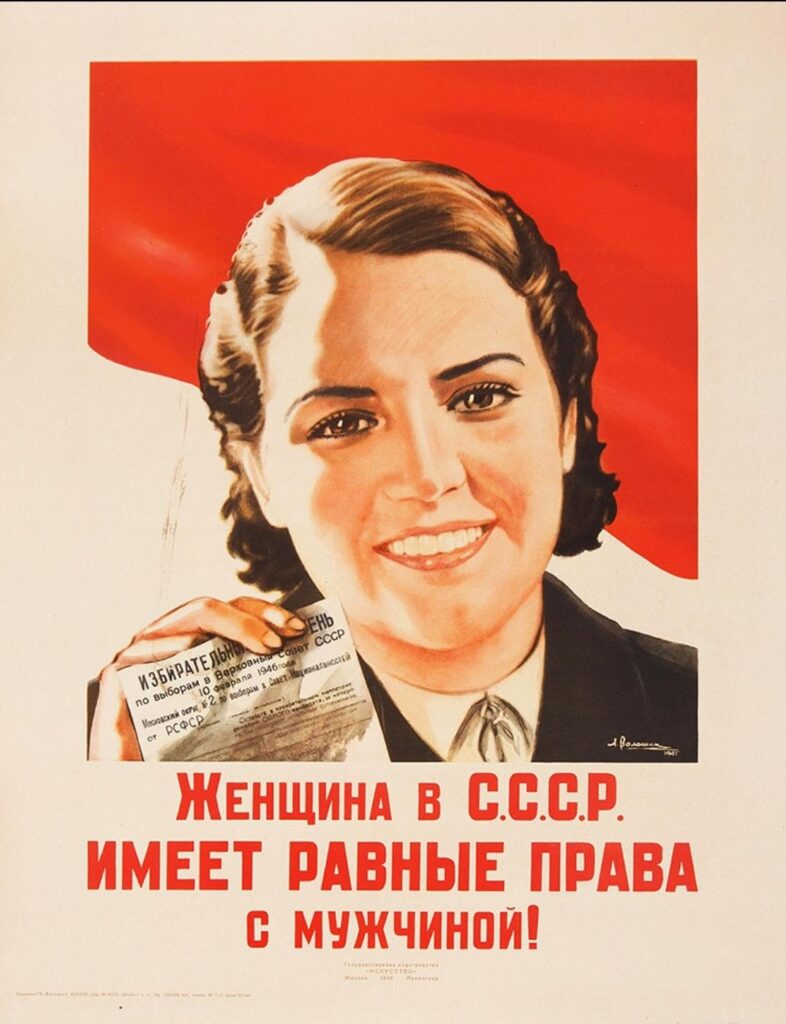
At least, according to Soviet officials.
Meanwhile, during the Great Depression of the 1930s, the birthrate in the United States plummeted and demand for abortions went up dramatically. Questions began to be raised about the morality and practicality of keeping the practice illegal. Like the prohibition of alcohol that had given rise to a dangerous black market run by an emboldened underworld, there were unintended consequences from hundreds of thousands of women seeking medical procedures under the examination table. If they could not find a qualified professional willing to bend the rules, they resorted to unqualified practitioners, with thousands of women dying each year in the process. Increasingly, state officials began to look the other way, as a larger and larger number of abortions were performed in hospitals, on the grounds that the woman’s life, or health, was in danger. One group consistently stood in opposition to this covert acceptance of abortion, just as they had stood against any acceptance of birth control, communism, and eugenics — American Catholics — and they kept these things linked together in their minds and the minds of others. But the majority of these same Catholics were also liberal New Deal Democrats, who supported President Roosevelt’s many efforts to uplift the poor and change the previously accepted scope of government.
With the post-World War II growth of the Women’s Rights movement and the increased acceptance of birth control, some states began rolling back their abortion laws in the decade before Roe vs. Wade. Ronald Reagan promised Pro-Choice Republican supporters that he would sign a law easing abortion restrictions, once he was Governor if the California Legislature could pass one. He was betting, and likely hoping, the bill would not pass, since his own feelings on the matter were conflicted. As the New York Times put it, on June 16, 1967, Gov. Reagan “reluctantly” kept that promise the day before, “making California the third state in the nation to liberalize its abortion laws this year.”
That same year, Albert H. Blumenthal was removed from a chairmanship position in the New York State Assembly, the lower house of the New York State Legislature, at least in part because he introduced legislation to relax New York’s abortion law. As reported in the New York Times, Blumenthal was, “a Reform Democrat from Manhattan,” and John Kennedy’s brother, the former Attorney General and then current U.S. Senator from New York, Robert Kennedy, “asked John J. Burns, state Democratic chairman, to try to heal the rift between Mr. Blumanthal and the man who removed him…” Blumenthal, who was a friend and advisor to RFK, put it more bluntly in a later oral history interview for the John F. Kennedy Library. Robert Kennedy “really went to bat for me… on the abortion issue.” In a later interview for the library, Blumenthal elaborated on this: “…the Senator was good enough to back me to the hilt. He said even though he was not per se in favor of abortion he thought it was a matter of conscience.” Adding that Bobby told him, “It’s okay, I cleared it with Ethel [Ethel Skakel Kennedy, Bobby’s wife] first.”
As Blumenthal understood it, RFK opposed abortion personally but did nothing to stand in the way of the legislation Blumenthal put forward and continued to support Blumenthal, which effectively helped the Pro-Choice cause, while avoiding most abortion discussions. The one time RFK did address the proposed changes to New York’s abortion law, it was in answer to a high school student. As reported in The Times:
Senator Robert F. Kennedy told a high school audience here today that “there are obvious changes that have to be made” in the state’s abortion law.
Arthur M. Schlesinger also claims in his biography, Robert Kennedy And His Times:
In fact, Kennedy approved birth control (for others), was sympathetic to the New York abortion law “and had been helpful to Albert Blumenthal in getting it through the state legislature.
The easing of abortion restrictions in New York was finally passed in 1970, two years after Robert Kennedy died, and the state’s Republican Governor, Nelson Rockefeller, signed it into law without reservations. This made both the Golden State and the Empire State quick trip destinations for women of means with unwanted pregnancies and even some Southern legislatures began to loosen abortion restrictions, but the options for poor women remained limited and haphazard.
Norma McCorvey became the plaintiff in a Texas test case under the pseudonym Jane Roe, knowing she would give birth to her third child before the legal process played itself out. Thus, Roe vs. Wade did not directly result in an abortion for McCorvey, only an adoption. In 1970, a District Court panel of three judges, one appointed by President Kennedy and two appointed by President Johnson, unanimously ruled that abortion was a Constitutional right under the general principle of privacy that underpinned previous birth control rulings.
This brings us back to Larry Elder and his second attempt to distort his reader’s perception of President Kennedy and the abortion debate.
How to Read a Letter
In 1971, after the District Court’s ruling, but before the 1973 final ruling by the Supreme Court in Roe vs. Wade, a Massachusetts man wrote his senator to voice his opposition to abortion. The reply he received has been selectively quoted by Pro-Lifers for decades and Elder continued this tradition, pretending that it supports his arguments:
…in a letter to a constituent, John Kennedy’s brother, Sen. Ted Kennedy, wrote: “It is my personal feeling that the legalization of abortion on demand is not in accordance with the value which our civilization places on human life. Wanted or unwanted, I believe that human life, even at its earliest stages, has certain rights which must be recognized — the right to be born, the right to love, the right to grow old. … Once life has begun, no matter at what stage of growth, it is my belief that termination should not be decided merely by desire.”
Here, Elder wants you to believe that Ted Kennedy was Pro-Life in 1971, implying that his brother would have been as well. He offers no thoughts on how or why the Senator’s position may have changed over time, nor does he suggest any reason why President Kennedy’s position would be at odds with the majority of Democrats today if he were alive. Elder also ignores anything RFK said or did on the issue, and seems to misunderstand the politically careful wording in the selective piece of the letter he quotes.
Not wanting to legalize “abortion on demand” leaves the door wide open to legalizing abortion under certain conditions and does nothing to tell us how many conditions should be considered. Saying that, “human life, even at its earliest stages, has certain rights,” does not tell us anything about how those rights might be balanced out with the rights of a pregnant woman. And flatly stating, “that termination should not be decided merely by desire,” does not tell us what termination should be decided upon or who should do the deciding. It is not the same as saying, “no pregnancy should be terminated.” It’s not even close. Senator Kennedy, or a member of his staff, was telling this constituent what he wanted to hear, without actually embracing that constituent’s position. Sen. Kennedy, much like Gov. Reagan, was navigating a careful political path through a minefield, even if they each had their own inclinations on the matter that would later come out more forcefully. In the late 60s and early 70s, neither of them wanted to get too far ahead or behind the crowd.
Reading the entire letter makes this more apparent, which talks of, “many moral and legal aspects arising from this complex issue.” Had the Senator simply been opposed to abortion, such wording would not have been necessary, because there would be nothing complex about it. One other thing worth noting is how Ted slipped other concerns into this letter, like his belief that America had, “an inadequate welfare system, unsatisfactory job training programs, and insufficient financial support for all [US] citizens,” which contributed to reasons why women sought abortions. These too were Kennedy Democrat positions, even if Elder and his ilk would like to ignore them.
The Pro-Life Movement, Post Roe
In the early days before and after Roe vs. Wade became the final word of the highest court, for decades to come, Protestant leaders regularly continued to dismiss abortion as a Catholic issue, which wasn’t that important to their congregations. Figures, such as Jerry Falwell, who would later become prominent in the Pro-Life movement, were still reeling from their loss in the fight over Civil Rights and still looking for ways to keep black children segregated through the use of, “Christian schools.” The Southern Baptist Convention, to which Falwell’s church belonged, passed a resolution in 1971 that said, “society has a responsibility to affirm through the laws of the state a high view of the sanctity of human life, including fetal life,” but also allowing abortions to be performed in cases of, “rape, incest, clear evidence of severe fetal deformity, and carefully ascertained evidence of the likelihood of damage to the emotional, mental, and physical health of the mother.” In substance, they were Pro-Choice, giving any woman seeking an abortion a list of reasons they could easily choose from to justify her decision.
Francis Schaeffer was the unlikely and largely forgotten figure who arguably did more than anyone to push self-styled evangelicals into the Pro-Life camp. I had the opportunity to speak with Francis’s son, Frank, years ago, about the semi-hippy community he grew up in with his missionary parents in post-World War II Switzerland. There was no free love or drug use, but there was an openminded exploration of ideas and a pursuit of knowledge, including secular knowledge, along with a laid-back atmosphere at the Schaeffer’s L’Abri community, where they were just as likely to be discussing the poetry of Bob Dylan’s lyrics as the meaning of Jesus’s Sermon on the Mount. Francis lived a simple Christian life, as he understood it, never acquiring lavish material goods, a private jet, mansions, exotic vacation homes, or even an office outside makeshift spots in the house. While making a far more favorable impression than the televangelist-style, sex scandal-ridden, swindlers he would later associate with, Francis was a strict adherent to the Bible as our only true guide to life and a forceful critic of the moral relativism that he believed was destroying society.
Abortion, the murder of a child by its mother, as Francis framed it, opened the door to anything being justifiable and permissible, in his mind. His influential books, How Should We Then Live? and Whatever Happened to the Human Race?, which Frank helped turn into successful propaganda documentaries, made the Pro-Life pillar central to a new big tent of Christians who pushed aside doctrinal differences in favor of shared hostility to easily demonized people and issues, like Darwinists, feminists, and gays. Many Catholics also made a strategic decision in the 70s to separate abortion from birth control. While still decrying both, they put their focus on abortion, because they could make common cause with the emerging Protestant Pro-Lifers here.
Not only did abortion become a driving issue, but the character of many people and groups changed to suit a new orientation. Liberal voices, who did not see the Bible as the direct and inerrant word of God, or who still believed in a New Deal, Great Society conception of government, were marginalized and ostracized from the Pro-Life movement. By 1979 Jerry Falwell, who had previously rebuked Dr. King for his political involvement (and for being a possible communist), was now saying that Christians should become political activists with his newly formed, Moral Majority organization. Then, in 1980, Reagan was elected President, and the “religious right,” largely misinformed by the Reality TV Christianity embodied in men like Falwell, quickly became the socially accepted form of Christianity, even among many of those who were against it.
By the time President Reagan took office, he was vocally committed to the fight against abortion, but his primary fight remained the struggle with the Soviet Union; the “Evil Empire,” as he dubbed it. Pro-Life supporters were not always happy with this, although they tended to see the USSR as Reagan did. Along with raising taxes, after lowering them, and granting amnesty to millions of illegal aliens, a principal objection that right-wing extremists had with Reagan was his desire to be the first President to put a woman on the Supreme Court. The woman he chose, Sandra Day O’Connor, was particularly troubling for the new orthodoxy spreading through the right, with an unclear position on abortion and past public support for the ERA (the Equal Rights Amendment to the Constitution, which President Reagan, Ford, and Nixon had all supported at one time before it became a “Feminist” Trojan Horse that would allegedly destroy the family).
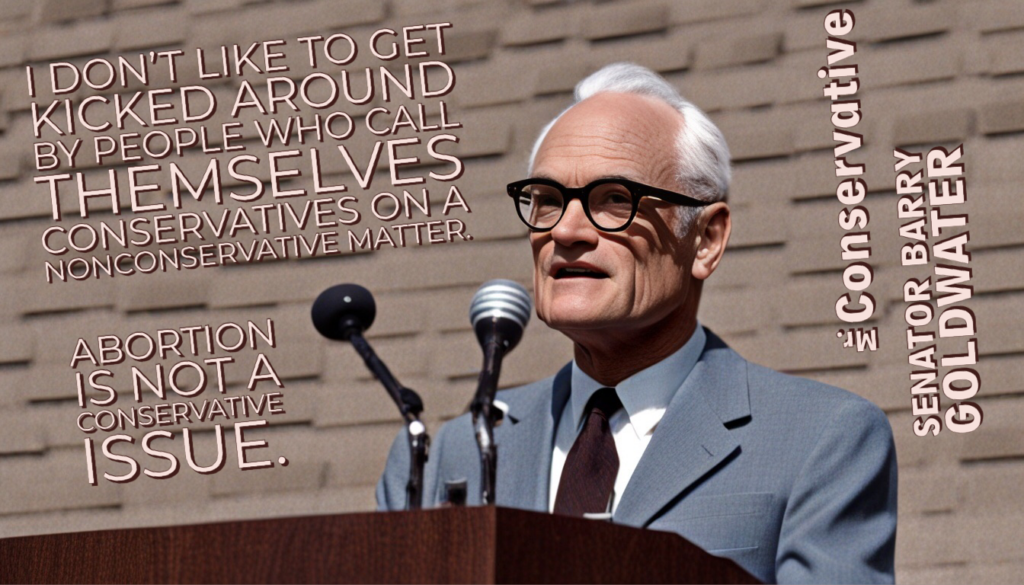
Backed by her friend and fellow Arizonian, Senator Barry Goldwater, O’Connor was confirmed by a Senate vote of 99 to 0, in October of 1981, but this only served to hide the erosion of the Senate’s traditional, “advise and consent,” roll, that was becoming more militant behind the scenes. According to the Congressional Record from July 8, 1981, Goldwater, who was once known as, “Mr. Conservative,” was standing against a tidal wave of new, fundamentalist conservatives that would wash much of his libertarian-minded Conservatism away:
The Arizona senator reserved his sharpest words for Moral Majority leader Jerry Falwell, who yesterday condemned Reagan’s choice of O’Connor. “I think that every good Christian ought to kick Falwell right in the ass,” Goldwater said.
At an earlier press conference, Goldwater said, “If it’s going to take a fight, they’re going to find old Goldy fighting like hell… I don’t like to get kicked around by people who call themselves conservatives on a nonconservative matter.”
Predicting no problem in the Senate confirmation of O’Connor, Goldwater said, “Abortion is not a conservative issue. ERA is not a conservative issue.”
Goldwater also accused single-issue groups of wasting the time of Congress.
“This abortion issue has gotten to be the biggest humbug issue in the United States. We have had over 40 votes on this matter without ever having a bill heard before a committee in this Congress… The country is going to pot economically, militarily and every other way and we spend all our time talking about busing and abortions.”
Calling O’Connor “the most conservative Republican I know,” Goldwater said, “I don’t buy this idea that a justice of the Supreme Court has to stand for this, that or the other thing.”
Senator Jesse Helms openly contemplated a filibuster to stop O’Connor from getting on the high court, but such tactics were not yet deemed acceptable. By 1992, when Justice O’Connor orchestrated the majority decision in Planned Parenthood v. Casey, which preserved a woman’s right to choose under new arguments than those in Roe, the militant right added a, “told you so,” attitude to their militancy. Reagan would remain a conservative hero, preserved in the image they wished him to be, but the O’Connor and Goldwater types had to go. The more hardline, the more uncompromising, the more unreasonable and dogmatic, the better. They were losing on abortion and gay rights, as veteran worriers for, “traditional values,” like Helms and Falwell had once lost on segregation. They would not reelect President George H. W. Bush, with his, “Read my lips,” insincerity, even if that meant handing the White House to a, “pro abortionist,” war protester, philanderer like Bill Clinton and his feminazi wife.
Arguably, this right-wingnut Monster had its Dr. Frankenstein, who later came to regard his creation with disdain but not to admit his mistake. Senator Goldwater, who infamously “reminded” the audience at the 1964 Republican Convention, “extremism in the defense of liberty is no vice [and] moderation in the pursuit of justice is no virtue,” is the man who threw the switch. His party took those words to heart in the decades to come and they formed a new credo around them; one in which “the establishment” could not be trusted because the establishment is inherently bad. What Goldwater failed to realize, is that extremism demanded extremism; muffling liberty and separating justice from moderation.
Elder Knows Best
On point after point, Mr. Elder’s factoids are so selective and out of context as to be deliberately false and detrimental to our understanding of history. The history of abortion, birth control, and reproductive rights is particularly complex, with a good deal of competing ideas about where the two major parties should stand, or which was the liberal or conservative position. Figures like Elder, self-styled wisemen, on both the right and the left, care nothing for such complexity. Their job is to shore up opinion on their side and make it easier for their team to imagine they are intellectually superior without ever being required to engage their intellect in any meaningful way.
In the case of this particular article from Elder, it is not hard to imagine his readers, safe within their online reality bubble, smiling smugly to themselves as Elder, “Owned the Lib-tards,” with his conclusion:
On guns, taxes, racial preferences, foreign policy and abortion, John F. Kennedy would not be comfortable in today’s Democratic Party. He was, after all, a Kennedy Democrat.
My conclusion: Elder doesn’t know President Kennedy or have any consistent definition of what a “Kennedy Democrat” was. History, as he presents it, can take any shape he needs it to; becoming more and more malleable under the hammer of his rhetoric and offering nothing of value.
John Kennedy would not be a Republican today, nor would he have a hard time recognizing his party. Today’s Democratic Party is still the Northern, FDR-style Democratic Party that predated JFK. The Republican Party, however, would be largely unrecognizable to John Kennedy, were he able to witness it today. He would be able to spot the former Southern, Confederate flag-waving Democrats, and the conspiracy-obsessed, John Birch Society Republicans, but he would likely be disheartened to see how these people have driven moderating forces and sensible ideas from the once venerated, GOP [Grand Old Party]. The MAGA, Cult of Trump-style “Republicans,” however, would be unlike anything he would have a frame of reference to explain.
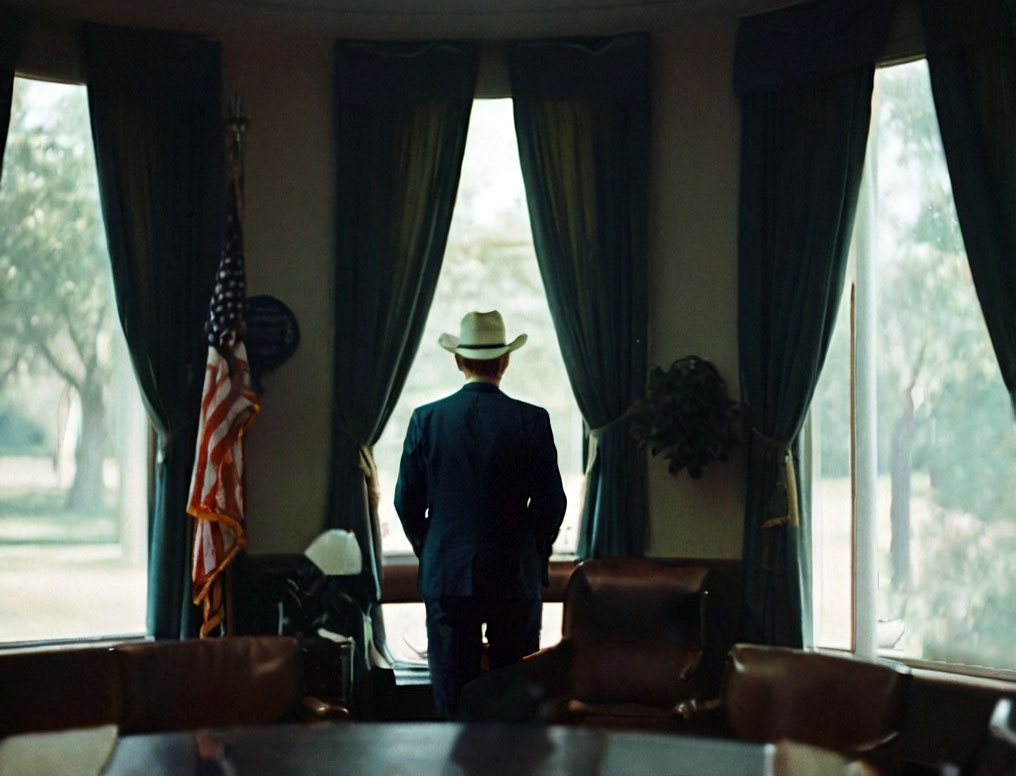
What Never Will Be
President Kennedy’s final day began with a short address to admirers who had gathered in the rain outside the Hotel Texas. Then he went inside to give what would be his last speech to a group of donors at a fundraising breakfast. Knowing that Kennedy wasn’t fond of wearing hats, they jokingly gave him a Stetson and asked him to put it on. He promised he’d wear it in the Oval Office when he was back in Washington. Then he left Ft. Worth for the neighboring city of Dallas as the rain stopped and the sun came out. “Kennedy Weather,” as the Secret Service had dubbed it; as if good luck followed him everywhere.
Our perceptions are often wrong, sometimes for seemingly good reasons, but usually, we make the evidence fit into what we want to believe. Had JFK not been blessed with “Kennedy Weather,” and the rain held, they would have put the bubble top on his limo and Oswald’s aim, no matter how true, would almost certainly have failed. President Kennedy would have completed his tour of Texas and returned to the White House to keep that promise. World events turn on unpredictable and uncontrollable things. More things, big and small, than we can ever hope to catalog. We can, however, do our best to sift through these things, through the pieces of evidence we can find, and reconstruct a reasonable window into the past. Or we can just make things up and pretend that this too is valid history. The choice is yours.
Recommended Reading: A Date That Will Be Forgotten, Conservatism



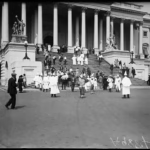



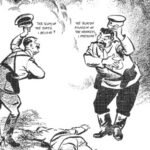





Leave a Reply